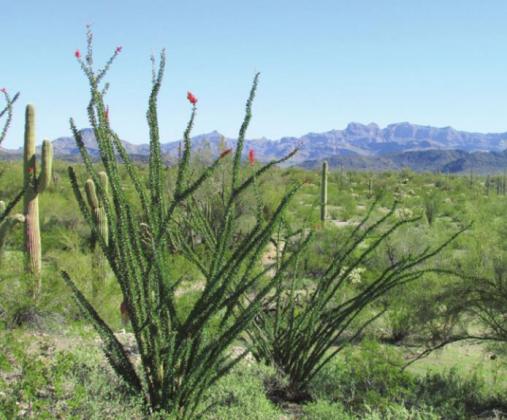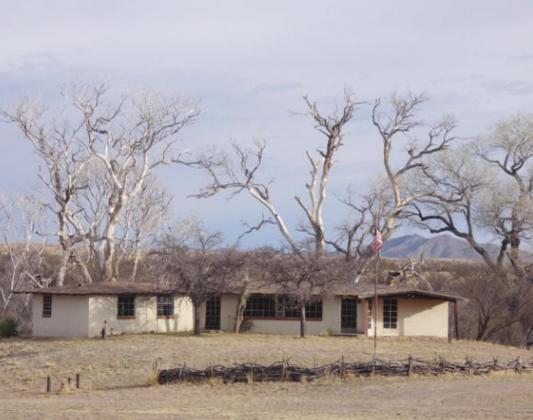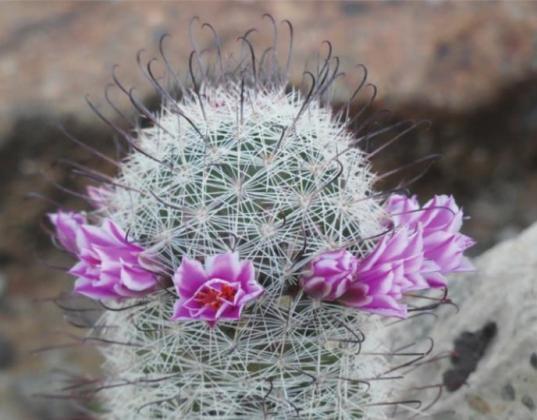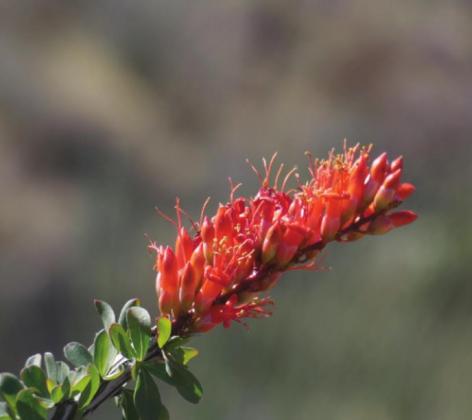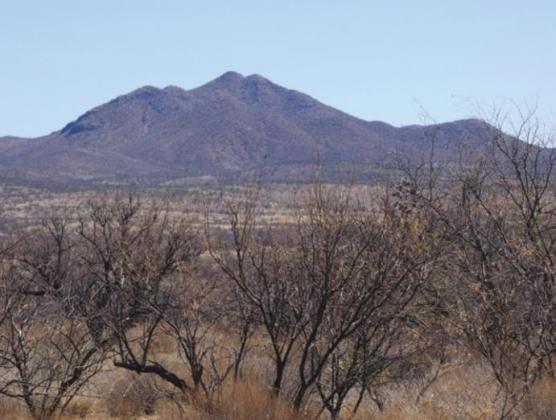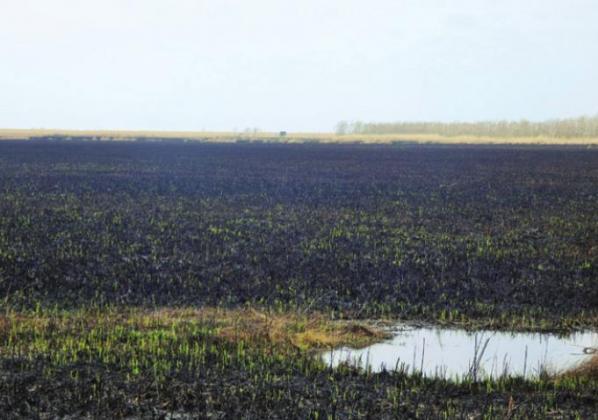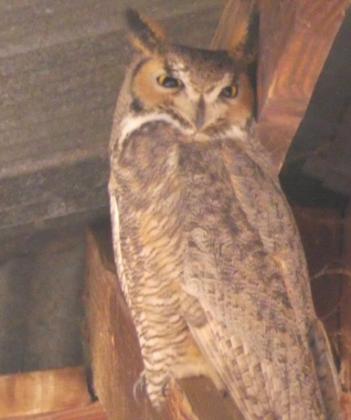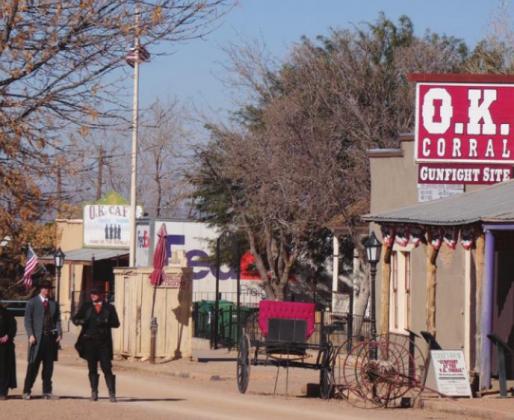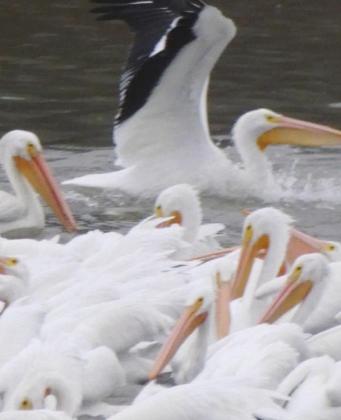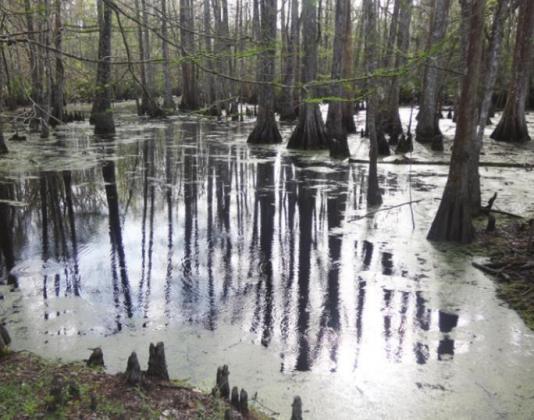AT ORGAN PIPE CACTUS NATIONAL MONUMENT in Arizona, our campground neighbor asked, “Where are you going next?”
“Buenos Aires,” I said.
Her eyebrows went up. Mouth puckered into an O.
“Not the Buenos Aires you are probably thinking of,” I said. “The wildlife refuge south of Tucson.”
The refuge was established to provide habitat for the endangered masked bobwhite quail. I can believe they are endangered. Shirley and I have never seen one and would not recognize it if we did. It is not even shown in our Audubon Field Guide. This quail is native to only a small slice of Arizona and the Sonoran Desert in Mexico. It was considered rare when discovered in 1885 and by 1920 was thought extinct. A captive-breeding program has raised its numbers to about 1,000. Two large ranches adjacent to the refuge participate in the conservation effort by preserving habitat. Buenos Aires also offers wild
Buenos Aires also offers wild life-related recreation—camping, that is—in a magnificent setting. That’s just our opinion, of course. All the campsites are “primitive” with no amenities unless you think of a bare patch of sand and a stone fire ring as amenities. Minutes after our arrival, I heard a roaring sound behind me and turned just in time to see a dust devil swirl through.
One of the main attractions for us is that the sites are widely spaced. This is important not because of COVID, but because Shirley and I welcome peaceful solitude. No neighbors talking loudly or generously sharing their taste in music. At Buenos Aires, it would not matter much if they did because our nearest neighbors were about 200 yards away.
On the mountain top 20 miles to the west is the dome of Kitt Peak Observatory, all shiny white silhouetted against the cerulean blue of the Arizona sky. The Las Guijos Mountains form the skyline to the east. Our campsite was slightly elevated with views of the open ranch land at the base of the mountains. It is an impressive location. If you appreciate that sort of thing.
I sent phone pics to our friend Bill who, with wife Sandy, has a winter home in Phoenix.
“Looks a little desolate,” he replied. “Remote, even.” Bill, as you undoubtedly gather, does not fully appreciate that sort of thing.
“Both remote and desolate,” I replied. “In other words, wonderful.”
But what does “desolate” mean, anyway? Literally it refers to a place without people that is bleak and dismal. Even so, if you are an old curmudgeon, a place without people is not necessarily a bad thing. Though the word has a clearly negative connotation, there are other ways you might react to the place itself. Beauty is in the eye of the beholder. One person’s trash is another person’s treasure. And things are beautiful only when and if they do not seem threatening.
Two hundred years ago, places we now consider the grandeur and glory of the West were perceived as dreadful obstacles. When Lewis and Clark reached the Lolo Pass, on what is now the Montana-Idaho line, they expected an unobstructed view of the Pacific. What they saw instead was a series of mountain ridges stretching to infinity. Instead of “Ocean in view. O! The joy!” their journal says “Oh, crap, how are we going to get through there?” Later travelers worried about how they were supposed to cross the wide Missouri, innumerable canyons, and Death Valley. Today, places along the Oregon Trail, the Santa Fe Trail, and the Lewis and Clark Trail are tourist attractions we can visit in comfort and safety.
There are now millions of people who think the desert really is wonderful rather than remote and desolate. If it has a golf course and you can get a tee time before it is too hot. And the exterminator comes regularly to suppress the population of scorpions. And if there are fine restaurants, theaters, sporting events, and a vast array of other entertainment options.
Please don’t think I am disparaging these folks. (Well, maybe just a little.) People should be allowed to like what they like. Even golf.
Speaking of which, at the lodge in one of our great national parks I overheard a guest complaining to the desk clerk that there was no golf course. According to him, a park is a place you go to play games and have picnics. National parks should, therefore, provide more than just scenery and wildlife. How was he supposed to keep his family entertained on their summer vacation?
But I digress.
After our stay at Buenos Aires, we went to Tucson to restock our pantry and RV refrigerator. Then we headed for Las Cienegas National Conservation Area, just 50 miles southeast. Another wildlife refuge. And another of our favorite places because it is so remote and desolate. Las Cienegas is rolling grasslands between the Santa Rita Mountains to the west and the Whetstone Mountains to the east. The wildlife attraction is mostly pronghorns, but you are much more likely to meet some free-range cattle. Our campsites there have always been visited by Black Angus steers. This year the herd also included a few rather assertive looking Charolais bulls. Both wildlife and the cattle benefit from the perennial flow of Cienega Creek. (“Cienega” means marshland. Perhaps that’s a little desert humor.)
The cattle represent the heritage of the Empire Ranch that was established in the 1870s when raiding Apaches and Comanches were still quite active. Area ranchers who went to look for their stolen cattle sometimes failed to come home. Western artist Frederick Remington could depict Comanches as noble warriors only after they ceased to be actual, serious threats. Empire was among the largest ranches in Arizona and its main house was a showplace back in the day. A surviving ranch house serves as park headquarters.
A word about desert environments because they are not all the same. (The four American deserts are the Sonoran, Chihuahuan, Mojave, and Great Basin.) Organ Pipe Cactus National Monument, our winter destination since 2012, is in the very green, plant- and wildlife-rich Sonoran Desert. There are numerous forms of cactus from the archetypal saguaro to the tiny pincushion. And the organ pipe cactus, of course. Trees include palo verde, ironwood, and mesquite. There are numerous varieties of flowering shrubs with ocotillo and brittlebush leading the way. Wildflowers include pink fairy dusters, Mexican gold poppies, and tiny blue scorpion weed. Every day you will see and hear Gila woodpeckers, cactus wrens, phainopeplas, and that glorious songster the curve-billed thrasher. Not to mention both red tailed and Harris’s hawks.
In other words, even by Bill’s standards, Organ Pipe is far from desolate. Granting Bill’s standards, just for the time being, Buenos Aires and Las Cienegas are dramatically different from Organ Pipe. The dominant winter vegetation in the refuges is dried-up native salt grass and extensive thickets of admittedly unattractive, ragged-looking, leafless mesquite. So, somewhat stark. Not what you would call pretty. Beautiful in some eyes but not pretty. You have to accept the desert and love it as it is. Or not.
Wildlife refuges in all kinds of environments serve as temporary homes or stopovers for migrating birds as well as permanent residents like those quail. Shirley and I have visited refuges on the way to our primary destinations only to find that the birds have already flown the coop or the large mammals, such as wild mustangs, were on the far side of the ridge. During the off season, the number and diversity of species may be greatly reduced. (You can’t go to the Lake Erie marshes just any old time and expect to see the waterfowl, raptors, and song birds that pass through during the great annual migrations.) There is a reason that winter visitors to the South are called “snow birds.” Like them, we come and go with the seasons.
On our way to the Southwest in late December or early January, for example, we stop at Whitewater Draw Wildlife Area to see 20 or 30,000 sandhill cranes, flocks of snow geese, and other waterfowl. This year there was even a great horned owl nesting in what was once an open-sided hay barn. Whitewater Draw is located in southeastern Arizona farm country. The refuge is a former cattle ranch now surrounded by croplands. The cranes are attracted by the shallow lake where they can spend the night standing in water, safe from predators, and by the nearby grain fields in which they feed. At dawn, they set off almost simultaneously with a cacophony of communal squawking. Visitors are allowed to overnight.
Returning east in late March or early April, we don’t bother stopping there because, like us, the cranes and snow geese have all departed for their nesting grounds in the North. Whitewater lacks both the stark beauty of Buenos Aires and the dramatic beauty of Organ Pipe. There are mountains on the far horizon, but the view is dominated by winter-bare corn stubble. The only other reason for tourists to be in the area is perhaps to visit Tombstone for the staged gunfights at the OK Corral. The Earp brothers and Doc Holliday still confront the Clantons and McLaurys every hour for your viewing pleasure.
Still, you never know what you might unexpectedly encounter. On December 28, headed to Pensacola on the first leg of our trip, we stopped for gas in Decatur, AL. At the edge of town is Wheeler National Wildlife Refuge. We had no intention of going there. In fact, had never heard of it. Driving by, we noticed some large gray birds that looked an awful lot like sandhill cranes. Pulled over to have a look. Sure enough, there were a couple dozen. Maybe not 30,000 but still worthy of our attention.
But, wait, there’s more.
About 200 white waterfowl that I mistook at first for snow geese were performing a ballet that would have impressed Esther Williams. As we drew closer, we found that they were pelicans swimming in unison, dipping their beaks to feed on fish they herded toward the shallows. Then they all slowly circled back to repeat the maneuver.
Our return home in March included a little detour south from Beaumont, TX to the far southwestern tip of Louisiana. We took Rt. 82 (The Creole Trail) through the coastal marshlands where there were more pelicans, both brown and white. Coastal areas can seem both remote and desolate in the off season when dull gray-brown marsh grasses stretch all the way to the horizon.
We stayed at Palmetto Island State Park at the edge of the cypress swamp. The plan was to revisit Cajun Country in the Atchafalaya Basin south of Lafayette: St. Martinsville, Avery Island where they make Tabasco, Vermilionville, Bayou Teche, the Joseph Jefferson mansion and gardens. Camp hosts stopped by to advise us where to seek shelter if we heard “a loud roaring that sounds like a freight train.” Tornado warnings provided all the incentive we needed to cut our visit short. Soon this proved to be a wise decision, indeed.
Even without tornadoes, many people associate a cypress swamp with gators, snakes, and creepy-crawlies. There are also black bears, and one night some feral hogs came snuffling and snorting through our campsite. Experienced hunters will tell you hogs can be even more dangerous than bears. But the Acadians, or Cajuns, have felt right at home there since the British evicted them from Canada in 1755. For them, the swamp is not threatening but the source of jambalaya, crawfish pie, and file gumbo. Pick guitar, fill fruit jar, and be gay-oh. Son of a gun, we have big fun on the bayou. Laissez les bon temps rouler! Bill would genuinely appreciate a live zydeco band, a seafood boil, or a big bowl of chicken and andouille gumbo. Maybe not the creepy-crawlies.
“Remote” and “desolate” define an attitude at least as much as the physical qualities of a place. Though deserts and bayous can sometimes seem forbidding, they can still be just a walk in the park for those with the right frame of mind.
LeMoyne Mercer is the travel editor for Healthy Living News. There is limited space here for LeMoyne’s photos. You might want to see more at anotherwalkinthepark.blogspot.com. Please leave comments on the site.

